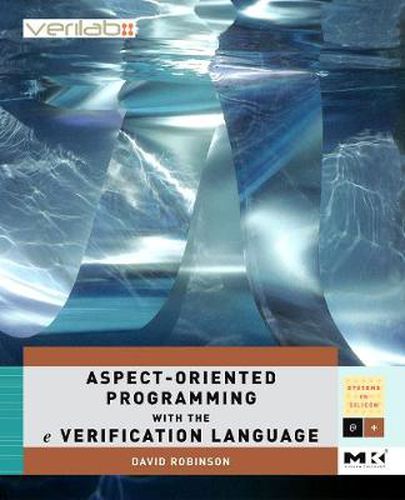Aspect-Oriented Programming with the e Verification Language: A Pragmatic Guide for Testbench Developers
David Robinson

Aspect-Oriented Programming with the e Verification Language: A Pragmatic Guide for Testbench Developers
David Robinson
What’s this AOP thing anyway, really-when you get right down to it-and can someone please explain what an aspect actually is? Aspect-Oriented Programming with the e Verification Language takes a pragmatic, example based, and fun approach to unraveling the mysteries of AOP. In this book, you’ll learn how to: . Use AOP to organize your code in a way that makes it easy to deal with the things you really care about in your verification environments. Forget about organizing by classes, and start organizing by functionality, layers, components, protocols, functional coverage, checking, or anything that you decide is important to you . Easily create flexible code that eases your development burden, and gives your users the power to quickly do what they need to do with your code . Truly create a plug-and-play environment that allows you to add and remove functionality without modifying your code. Examples include how to use AOP to create pluggable debug modules, and a pluggable module that lets you check that your testbench is still working before you begin a regression .Utilize AOP to sidestep those productivity roadblocks that seem to plague all projects at the most inconvenient of times . Discover why return is evil, and some other gotchas with the AOP features of e All of the methodologies, tips, and techniques described in this book have been developed and tested on real projects, with real people, real schedules and all of the associated problems that come with these. Only the ones that worked, and worked well, have made it in, so by following the advice given in this book, you’ll gain access to the true power of AOP while neatly avoiding the effort of working it all out yourself. . Use AOP to organize your code in a way that makes it easy to deal with the things you really care about in your verification environments. Forget about organizing by classes, and start organizing by functionality, layers, components, protocols, functional coverage, checking, or anything that you decide is important to you . Easily create flexible code that eases your development burden, and gives your users the power to quickly do what they need to do with your code .Truly create a plug-and-play environment that allows you to add and remove functionality without modifying your code. Examples include how to use AOP to create pluggable debug modules, and a pluggable module that lets you check that your testbench is still working before you begin a regression . Utilize AOP to sidestep those productivity roadblocks that seem to plague all projects at the most inconvenient of times . Discover why return is evil, and some other gotchas with the AOP features of e
This item is not currently in-stock. It can be ordered online and is expected to ship in approx 2 weeks
Our stock data is updated periodically, and availability may change throughout the day for in-demand items. Please call the relevant shop for the most current stock information. Prices are subject to change without notice.
Sign in or become a Readings Member to add this title to a wishlist.

